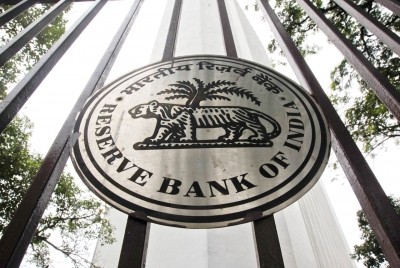
Mumbai, The Indian rupee, which was falling since the start of calendar year 2022 and touched lifetime lows multiple times, was defended by the Reserve Bank of India (RBI) multiple times in a prudent manner by spending the country's forex reserves.
"The erosion in the forex reserves amid the central bank's filling the gap between dollar demand-supply. The RBI has very well managed the inflows and outflows in the last couple of years," said Dilip Parmar, Research Analyst, HDFC Securities.
According to the data compiled from the RBI's website, the central bank, since the start of this calendar year, has spent $94.752 billion till date to defend rupee from a free fall. Since the start of this financial year, it has used $71.768 billion.
As on August 26, the forex reserve of the country was $561.046 billion, sharply lower from $633.614 billion as on December 31, 2021.
"The outflow has been global as all the risky assets have seen selloff including equities... metals sector has been impacted largely as slowdown signs in US along with recession on paper with back to back lower GDP number in US has shifted all the cash flows to dollar, as in times of slowdown, dollar is best bet to beat the high inflation numbers," said Jateen Trivedi, VP Research Analyst at LKP Securities.
Trivedi added that this has led to outflows by FPI FII in last few months which has made rupee weak, but comparing from current FY overall the rupee fall has been very less as Rupee has seen fall of 5 per cent, euro 10 per cent, pound 11.50 per cent, and the Japanese yen a massive 15 per cent, compared to USD.
In the past few months, rupee has depreciated to record low on multiple occasions. On August 29, it had depreciated to all-time low of 80.15 against the US dollar due to strong American currency and firm crude oil prices.
The depreciation in rupee is on the back of global concerns rather than domestic concerns. Globally, there were concern of recession, hawkish global central bank policies and drive to safe heaven driven the dollar higher against most currencies.
"Globally, the average borrowing cost has been rising which could be negative for the risk assets and investors prefer investment at home rather than overseas which might lower the inflows in EM. While India is the fastest growing economy in the world, inflows will come sooner or later," Parmar added.
The performance of the dollar was strong against the whole basket of currencies which have dropped 8-13 per cent with respect to the euro, yen, and pound against the dollar, hence the rupee has also been feeling the heat as dollar index has scaled to 20-year high as the base currency touched 110$.
Domestically, India's performance has been good when it came to consumption of make and buy in India but it is the exports which have been hampered with IT & Pharma feeling the heat as demand has slumped after unlocking, hence imports has been continued and export has seen a down trend.
Foreign portfolio investors remained heavy sellers in the Indian market, however, they have turned net buyers in Indian equities only after late July.
According to the NSDL data, FPI investment in debt is negative worth Rs 1.59 lakh crore, with outflows of Rs 50,203 crore in the month of June, highest in this calendar year.
In the previous two years, the RBI has bought the dollar to stabilise the market while recently when FPIs are selling in the equities and debt market, they are fulfilling the needs.
Experts believe that the outflows are expected to fall going forward as soon as the inflation numbers decline, with the Indian festive season kickstarting domestic sales and consumption.
Festive season in India will see a major flow nearly two years after Covid restrictions and this time it will be celebrated on a large scale.
This shall automatically bring in confidence and macro micro data will show resilience to fall in coming quarter numbers hence FII & FPI will bring back the money flow into Indian shores as the neighboring markets have not been steady in economic and business terms due to geopolitical issues raised after Russia-Ukraine, China-Taiwan, and China-US conflicts.


.jpeg)

